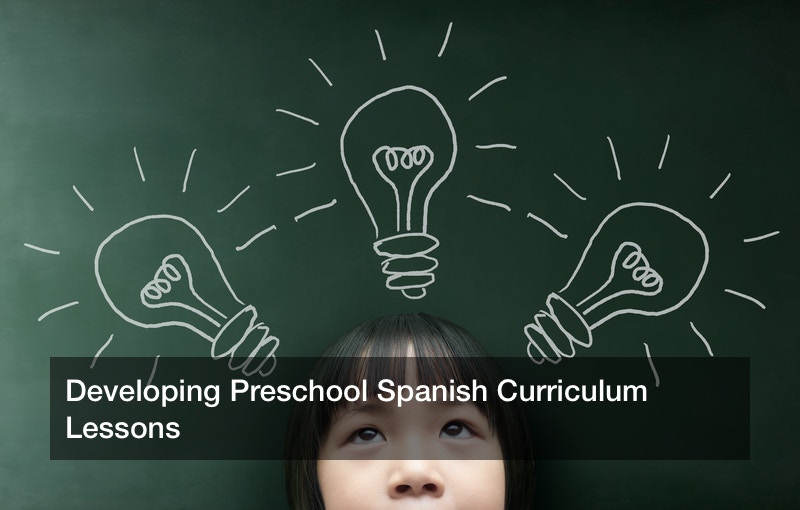
Currently, there are about 6,500 languages are spoken in the world with Spanish being the second most spoken language, with around 387 million native speakers. This, in turn, ranks Spanish among the most popular foreign language in the world offering plenty of opportunities for Spanish speakers around the globe, according to census reports.
Spanish classes for children — toddlers, preschoolers, and elementary, has become an integral part of the modern upbringing. Many parents are enrolling their children to take Spanish language courses and this is mainly because at that age a child is in a better position to grasp a new language. It is a critical stage in your child development when acquiring language skills comes naturally and easily. Your child’s ability to pronounce foreign sounds and learn new grammar rules is highly enhanced before the age of six.
If you’re looking to offer Spanish for preschools, read on for tips in developing effective Spanish language immersion programs and the best resources to incorporate into your classes. Moving away from the conventional method of teaching a new language, word memorization, teachers and parents are exploring beyond to more realistic, lively, and fun ways of teaching Spanish for beginners. If a child is to be exposed to Spanish, more has to be done than just word memorization.
You need a comprehensive dual language immersion program and children’s Spanish curriculum that offer context. An example of this program would involve fun hands-on Spanish activities, games, songs, and stories.
Here are a few tips on teaching Spanish and creating lessons for preschools
Developing Preschool Spanish Curriculum Lessons
The ability for kids to learn a second language is much high than in adults and it’s made possible through playing, talking, games, songs, and stories. However, you need to be realistic with your expectations on the lessons because, while a child understands the language first before speaking, they may not be able to produce as much, and that’s expected.
The idea is to create engaging and age-appropriate activities kids can easily relate with and participate in. Kids love to play and when a learning session is turned into something fun then acquiring the new language becomes easy. If you’re offering Spanish for preschools, then try incorporating these few tips into your program.
- Imitate word with actions and add movements whenever necessary
- Incorporate simple, short activities and have them alternated at intervals
- Add realistic visuals and real object to the activities for a hands-on learning experience
- Develop a range of fun and engaging activities, songs, stories, chats and much more
- Develop healthy routines so kids prepare for the next activity
- Repetition encourages retention so engage kids on more familiar activities
When teaching Spanish for preschools, the idea is to use as much comprehensible input, in context, as possible. That’s the best way they’ll understand the language. So how do you do this? First, introduce them to new words they understand and develop from there. Repeat the phrases and check if they understand. New words are best introduced using real objects and impressive visuals. Introduce songs, and narrate short stories to keep them interested in the new language.
Here is an example of a situation you can adopt for your Spanish program and adjustments can be made to fit your specific group needs.
30-Minute Lesson With a Group
A typical 30-minutes Spanish lesson can be breakdown into various activities.
- Warm-up Use the first 5 to 10 minutes to welcome students and review greetings.
- Mini-lesson The next ten minutes can be used to introduce new phrases, word, songs and stories.
- Brain-break This is a brief session, can last up to 3 minutes, and it can involve singing, dancing, jumping, running, etc.
- Follow-up activity can last up to 10 minutes, and activities such as coloring, crafting can be incorporated
- Wrap-up Lastly, spend about 5 minutes to watch a video, saying and reviewing good-bye.
After a while, you should have developed a working program then you can replicate it on different groups. Spanish for preschools needs patience as a teacher or parent.
Related Keywords:
2nd grade spanish curriculum, 3rd grade spanish curriculum, 9th grade spanish curriculum, abeka spanish curriculum, ace spanish 1, ace spanish curriculum, activities in spanish for preschoolers, app spanishforkids, best spanish curriculum for kids, best spanish curriculum for middle school, best spanish program for homeschoolers, best way to teach spanish to toddlers, bilingual homeschool program, books to teach spanish to preschoolers, calico spanish curriculum, children’s spanish workbooks, conversational spanish for children, homeschool preschool spanish curriculum, how to teach my 3 year old spanish, learning spanish for 1st graders, lessons to teach preschoolers.

